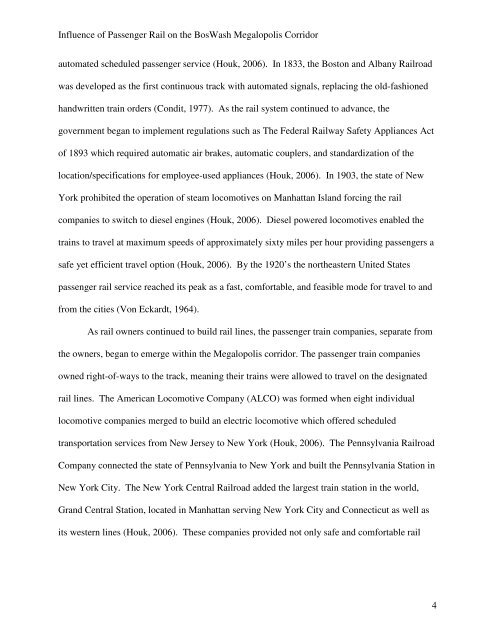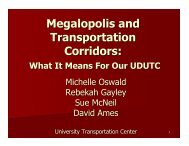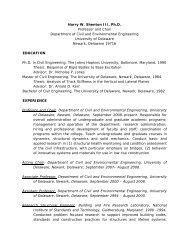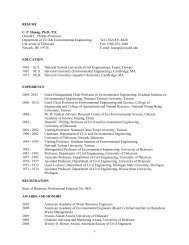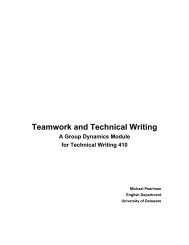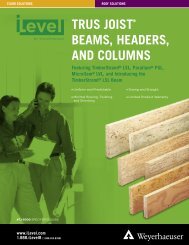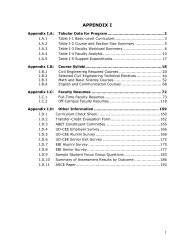Influence of Passenger Rail on the BosWash Megalopolis Corridor ...
Influence of Passenger Rail on the BosWash Megalopolis Corridor ...
Influence of Passenger Rail on the BosWash Megalopolis Corridor ...
Create successful ePaper yourself
Turn your PDF publications into a flip-book with our unique Google optimized e-Paper software.
<str<strong>on</strong>g>Influence</str<strong>on</strong>g> <str<strong>on</strong>g>of</str<strong>on</strong>g> <str<strong>on</strong>g>Passenger</str<strong>on</strong>g> <str<strong>on</strong>g>Rail</str<strong>on</strong>g> <strong>on</strong> <strong>the</strong> <strong>BosWash</strong> <strong>Megalopolis</strong> <strong>Corridor</strong><br />
automated scheduled passenger service (Houk, 2006). In 1833, <strong>the</strong> Bost<strong>on</strong> and Albany <str<strong>on</strong>g>Rail</str<strong>on</strong>g>road<br />
was developed as <strong>the</strong> first c<strong>on</strong>tinuous track with automated signals, replacing <strong>the</strong> old-fashi<strong>on</strong>ed<br />
handwritten train orders (C<strong>on</strong>dit, 1977). As <strong>the</strong> rail system c<strong>on</strong>tinued to advance, <strong>the</strong><br />
government began to implement regulati<strong>on</strong>s such as The Federal <str<strong>on</strong>g>Rail</str<strong>on</strong>g>way Safety Appliances Act<br />
<str<strong>on</strong>g>of</str<strong>on</strong>g> 1893 which required automatic air brakes, automatic couplers, and standardizati<strong>on</strong> <str<strong>on</strong>g>of</str<strong>on</strong>g> <strong>the</strong><br />
locati<strong>on</strong>/specificati<strong>on</strong>s for employee-used appliances (Houk, 2006). In 1903, <strong>the</strong> state <str<strong>on</strong>g>of</str<strong>on</strong>g> New<br />
York prohibited <strong>the</strong> operati<strong>on</strong> <str<strong>on</strong>g>of</str<strong>on</strong>g> steam locomotives <strong>on</strong> Manhattan Island forcing <strong>the</strong> rail<br />
companies to switch to diesel engines (Houk, 2006). Diesel powered locomotives enabled <strong>the</strong><br />
trains to travel at maximum speeds <str<strong>on</strong>g>of</str<strong>on</strong>g> approximately sixty miles per hour providing passengers a<br />
safe yet efficient travel opti<strong>on</strong> (Houk, 2006). By <strong>the</strong> 1920’s <strong>the</strong> nor<strong>the</strong>astern United States<br />
passenger rail service reached its peak as a fast, comfortable, and feasible mode for travel to and<br />
from <strong>the</strong> cities (V<strong>on</strong> Eckardt, 1964).<br />
As rail owners c<strong>on</strong>tinued to build rail lines, <strong>the</strong> passenger train companies, separate from<br />
<strong>the</strong> owners, began to emerge within <strong>the</strong> <strong>Megalopolis</strong> corridor. The passenger train companies<br />
owned right-<str<strong>on</strong>g>of</str<strong>on</strong>g>-ways to <strong>the</strong> track, meaning <strong>the</strong>ir trains were allowed to travel <strong>on</strong> <strong>the</strong> designated<br />
rail lines. The American Locomotive Company (ALCO) was formed when eight individual<br />
locomotive companies merged to build an electric locomotive which <str<strong>on</strong>g>of</str<strong>on</strong>g>fered scheduled<br />
transportati<strong>on</strong> services from New Jersey to New York (Houk, 2006). The Pennsylvania <str<strong>on</strong>g>Rail</str<strong>on</strong>g>road<br />
Company c<strong>on</strong>nected <strong>the</strong> state <str<strong>on</strong>g>of</str<strong>on</strong>g> Pennsylvania to New York and built <strong>the</strong> Pennsylvania Stati<strong>on</strong> in<br />
New York City. The New York Central <str<strong>on</strong>g>Rail</str<strong>on</strong>g>road added <strong>the</strong> largest train stati<strong>on</strong> in <strong>the</strong> world,<br />
Grand Central Stati<strong>on</strong>, located in Manhattan serving New York City and C<strong>on</strong>necticut as well as<br />
its western lines (Houk, 2006). These companies provided not <strong>on</strong>ly safe and comfortable rail<br />
4


